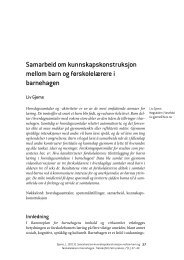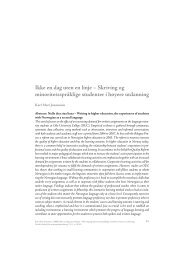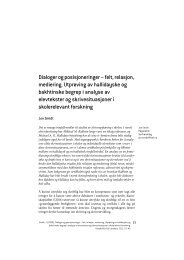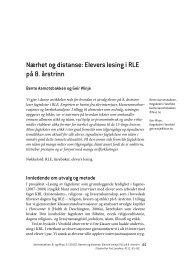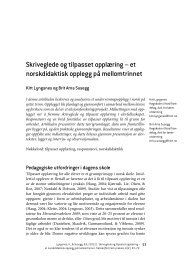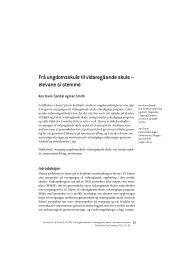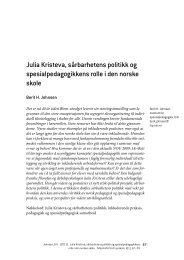AN ESSAY ON SPIRITUALITY OF HOMO LUDENS URBANUS
AN ESSAY ON SPIRITUALITY OF HOMO LUDENS URBANUS
AN ESSAY ON SPIRITUALITY OF HOMO LUDENS URBANUS
- No tags were found...
You also want an ePaper? Increase the reach of your titles
YUMPU automatically turns print PDFs into web optimized ePapers that Google loves.
Nordic Journal of Religion and Society 22:1a matter of believing as if things are in some way special and specific compared to everydayreasoning.If we follow Walter Benjamin and his thinking of mimesis or the mimetic faculty, wecan find one perspective on the playfulness of the modern culture and its connection toreligious thinking. Benjamin considered mimesis (mimicking, imitating) as the main culturalforce and a theme with which he aimed at breaking down the positivism of the conceivingof the modern world (Peltonen 1999: 84–85). Like Caillois and Huizinga, Benjaminsaw mimesis as a something primordial and bound to nature before the evolutionof culture. For Benjamin, mimetic faculty means a way of thinking or reading the realityin a same way than reading the stars, the tee leaves or the liver. Modern man shares thesame ‘superstitious’ aspiration with his predecessors in Mesopotamia. (Benjamin 1989;Taussig 1993)Mimesis is a cultural current that works against modern rationality, because it representsan opposite relation to progress and evolution. In the mimesis, Benjamin thought,continuity and discontinuity of modern culture were challenged by a view of the simultaneityof difference and sameness. This way play can be regarded as a permanent changewithout progress. Playfulness of our culture is like a network of roads covering the wholeworld, but coming from nowhere and also leading nowhere. It does not have a startingpoint in mythology, nor does it provide any idea of our destination. The network of roadshas neither an engineer which would give a meaning outside itself, nor a structure. It isjust an endless interplay between what is and what could be, and as such it is like an energeticprinciple.I think this pretty vague idea of non-progressiveness resonates with what has beenthought in the discussions of post-modernity or late modernity with its lack of guidingnarratives, end of history and a void or powerlessness of ideologies. History has lost itsgoal, and it has been replaced by trends and megatrends which are based on the extrapolationof parameters of some present phenomena. We could hypothesise, that the rise ofplayfulness is either a cause or an effect, or both, of this kind of secularisation of themodernism. However, there is another aspect of play and games which, according to mystudy, is quite essential when understanding urban life, and which I suggest could havean effect in the realm of religiousness. It is the already mentioned classic conception ofurbanity prevailed by unexpectedness, which I have elaborated further to the idea of aleatoryplayfulness (of aleatory play see Caillois 1961).Game of chanceUnexpectedness means either a feeling that anything can happen, as it did for GuyDebord (1994/1967) and for the artistic movement of Situationists, who pursued tobrake the everyday urban life ordained by capitalism in the 1950’s and the 1960’s. Or,unexpectedness means at least that something could happen, as it did for ErvingGoffman (1967), who saw it as the basic motivation for people to gather in urban publicplaces. By aleatory playfulness, I mean that modern urbanites have habituated to theunexpectedness of the city, and that they utilise it for their enjoyment. The tradition of4


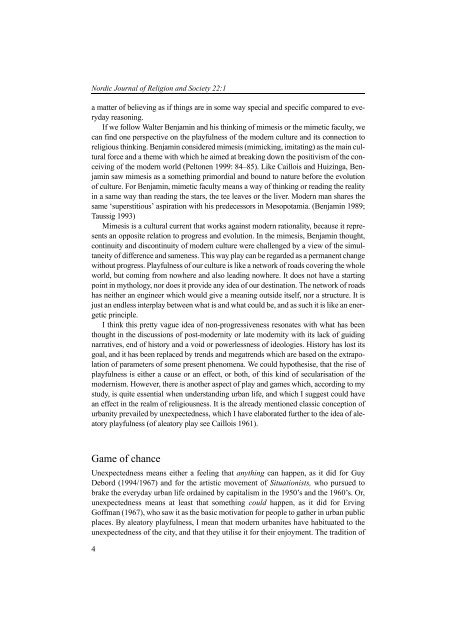
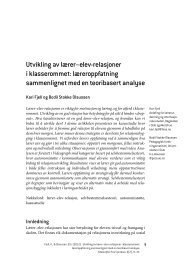
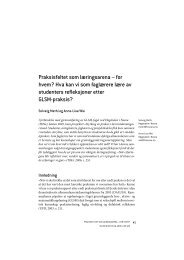
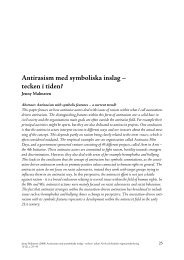
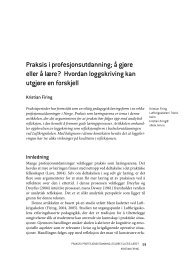
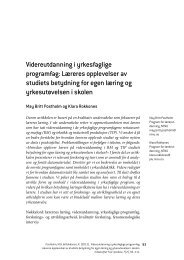
![Hvordan skal jeg […] utvikle meg selv? - Tapir akademisk forlag](https://img.yumpu.com/47976067/1/184x260/hvordan-skal-jeg-utvikle-meg-selv-tapir-akademisk-forlag.jpg?quality=85)
